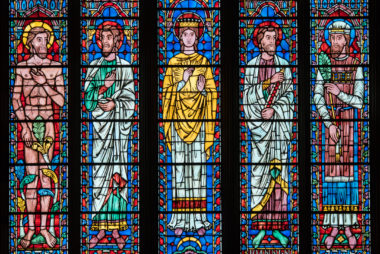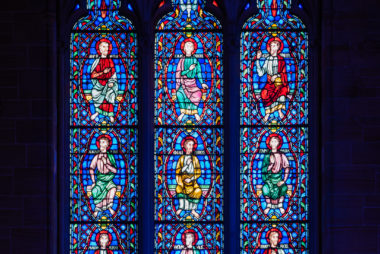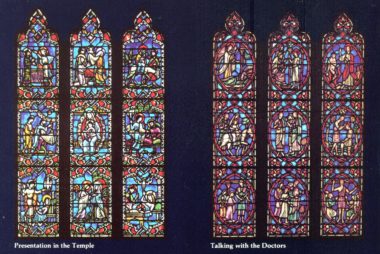Cathedral History
The main construction of the Bryn Athyn Cathedral took place between the years 1913 and 1928 with work on the stained glass windows and interior decoration continuing into the early 1940s and beyond. The main building is Gothic, while the northern and southern buildings are in the early Romanesque style.
Industrialist John Pitcairn (1841-1916) provided funding for the project, and his son Raymond (1885-1966) oversaw the design and construction of this unique Gothic and Romanesque-style complex.
The Bryn Athyn Cathedral was constructed using methods highly unusual for the twentieth century.
Workshops for stone, wood, metal, and stained glass were built on site allowing designers and craftsmen to collaborate. Skilled stone carvers, woodworkers and other craftsmen from Europe fashioned natural materials to construct and beautify the building. Though all of the work was done onsite, materials came from near and far.
The symbolic plan is based on the teachings of the New Church.
A notable feature of the Bryn Athyn Cathedral is the use of architectural refinements–intentional departures from vertical and horizontal straight lines (“bends in elevation,” “curves in plan”)– in order to give a sense of life and movement to the building. This subtle quality represents the unpredictable path of human growth.

Stained Glass
The Cathedral’s hand-blown glass windows were designed and made at a studio and furnace established in Bryn Athyn. The lost art of making pot metal glass was revived in order to duplicate the vibrant colors and textures of medieval stained glass.
As early as 1914, Raymond Pitcairn had begun thinking about the stained glass windows for the Cathedral. Determined to reproduce the textures and pure colors of the early Gothic French windows he admired during his trips to Europe researching construction, he arranged for the translation of a twelfth-century manuscript on the subject to revive the medieval art of making pot metal glass.
His artists were sent to England and France to photograph and draw windows in specified churches. He also sent them to see a stained glass collection of a friend, in order to provide them with a hands-on view of medieval panels.
Stained glass craftsmen were sought and set to work experimenting with colors recipes before they moved on to create the hand-blown windows seen in the Cathedral today.
The windows, while medieval by design, depict distinctive New Church doctrines.
The great window above the west portal depicts the five successive churches of God upon the earth, as represented in the Word by Adam, Noah, Aaron, the Apostle John, and the Woman Clothed with the Sun. The upper panel depicts a scene representative of the church's beginning and the bottom panel (aside from that of the Woman Clothed with the Sun) depicts a scene representative of the church's end.
Photo by Stephen Conroy.
Restoration
The Bryn Athyn Church congregation is dedicated to preserving the Bryn Athyn Cathedral as a house of Divine Worship, a center for community activities and outreach as well as a building of considerable historical and architectural importance. Restoration and maintenance is an ongoing endeavor.



